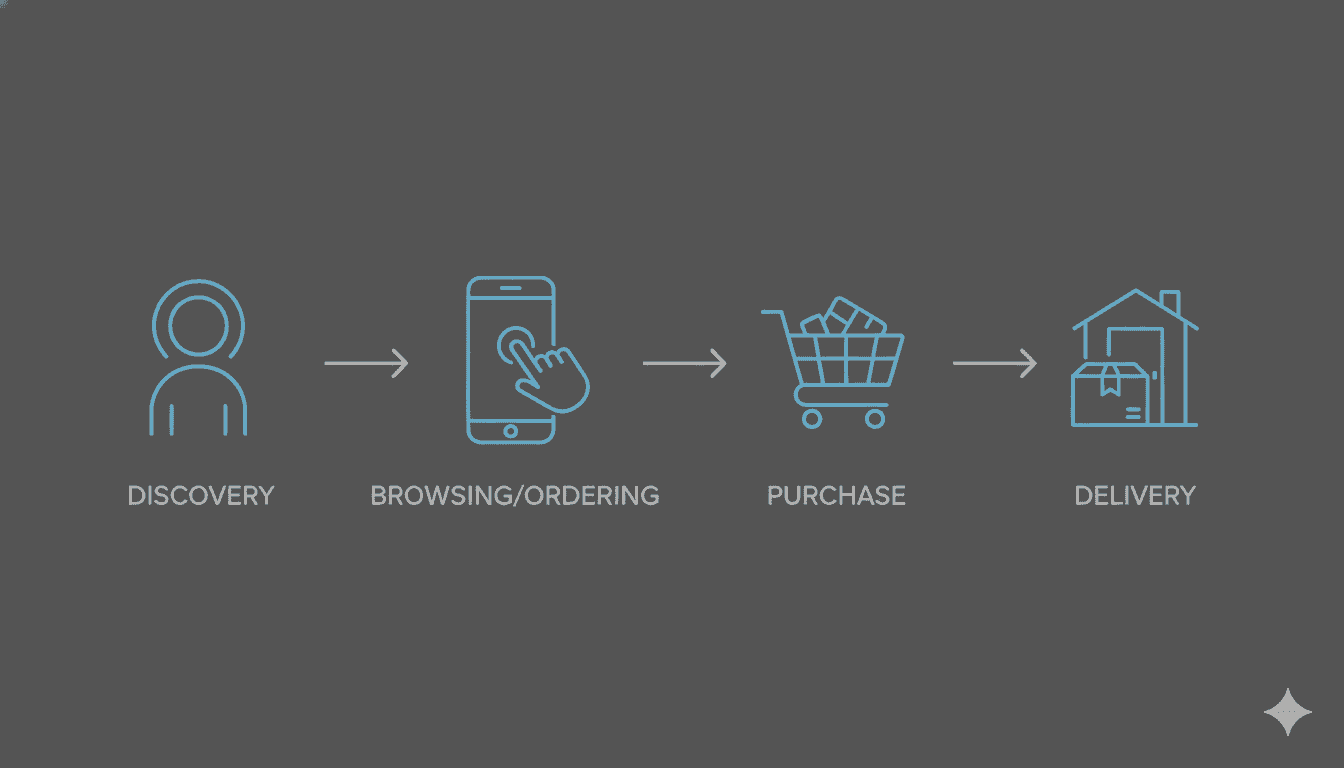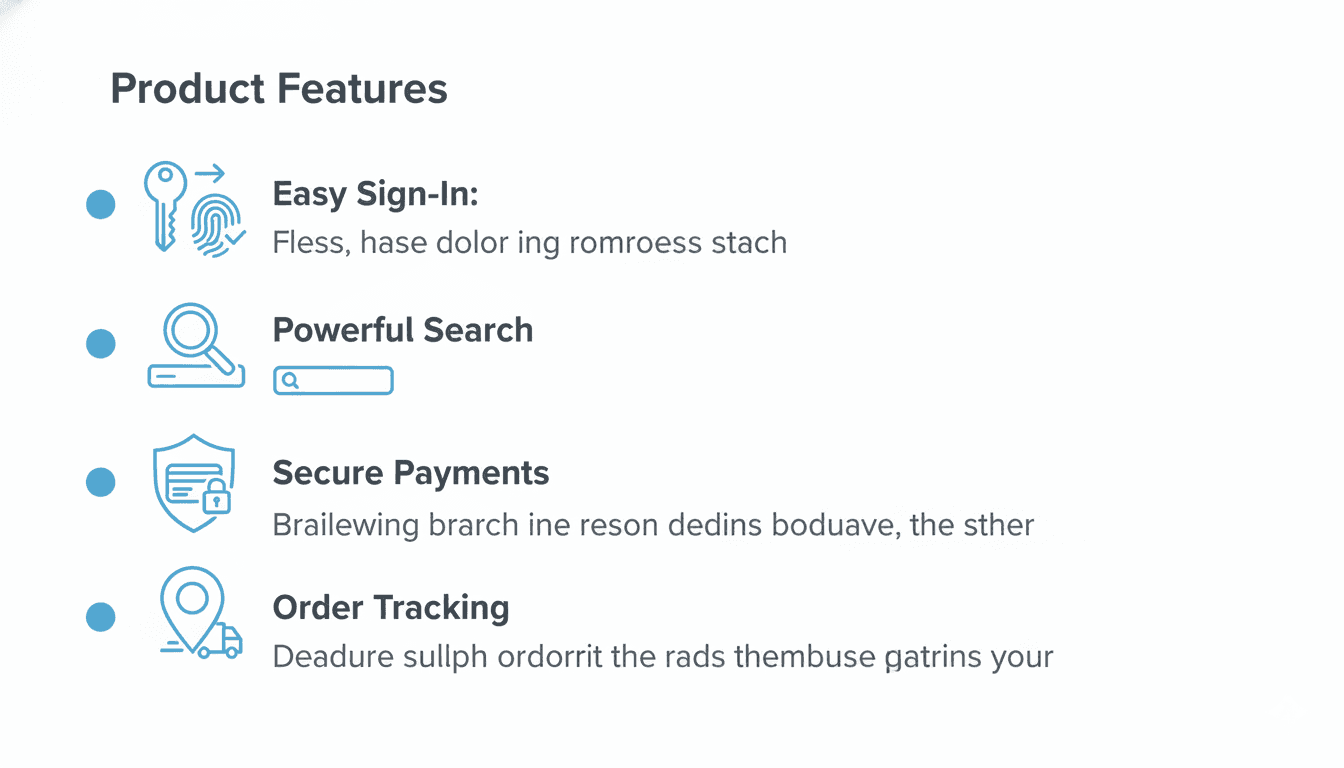Time to read :
1 min read
Ready to sell on mobile? If you want to grow your business, now is the perfect time to learn about eCommerce app development.
Shopping has changed. Instead of walking into a store, customers now browse and buy products directly from their phones. With the eCommerce market expected to hit $7.9 trillion by 2027, having a mobile app is no longer a luxury, it's essential.
If you want to reach more customers, build loyalty, and increase sales, this guide is for you. We will cover all the key steps, features, costs, and trends you need to know to build a successful eCommerce app.
What is an eCommerce App?
An eCommerce app turns your customer's phone into a digital storefront. It allows people to shop anytime, anywhere, right from their tablet or smartphone.

A great app makes the entire shopping experience seamless. The key goals of an eCommerce app are to provide:
Easy Browsing: A clear product catalog that makes it easy to find and buy items safely.
Simple Payments: Multiple payment options to complete transactions securely.
Helpful Updates: Real-time order tracking and notifications to keep customers informed.
Smart Suggestions: Personalized recommendations based on browsing habits to improve the customer experience.
Now that you know what an eCommerce app is, let's look at the features that make one successful.
Must-Have Features for Any eCommerce App

To get customers to download and use your app, it needs to be fast, simple, and easy to navigate. Here are the essential features every great eCommerce app should have:
Easy Sign-In: Let customers log in quickly with social accounts (like Google or Facebook) or secure fingerprint/face ID. This saves time and builds trust.
Clear Product VIsuals: Show off your products with high-quality images, clear categories, and detailed descriptions.
Powerful Search and Filters: Help users find exactly what they want with a fast search bar and easy-to-use filters (like size, color, or price).
Guest Checkout: Allow users to make a purchase without creating an account. This reduces friction and leads to more sales.
Secure Payments: Integrate trusted payment gateways to ensure every transaction is safe and worry-free.
Order Tracking: Give customers peace of mind with real-time notifications at every stage of the shipping process.
How We Take Your App to the Next Level
Basic features are a great start, but advanced technology can set your app apart. Here is how we help our clients build a truly exceptional mobile experience:
GenAI Engineering: We use Machine Learning to go beyond basic suggestions, offering smart product recommendations and personalized offers based on user behavior.
AI Chatbots: We integrate intelligent chatbots to answer customer questions instantly, improving your support and saving you time.
Performance & Speed: We build apps designed for speed, ensuring a smooth, fast experience for every user, even during busy sales periods.
Top 7 Strategic Steps to Develop a Scalable eCommerce App
Wondering where to begin? Follow these seven strategic steps to build a high-quality eCommerce app that can grow with your business.
1. Perform a Market Survey
Start by analyzing your target market and audience. Understand your customers' needs, demographics, and where they like to shop. Research your competitors to identify their strengths, weaknesses, and what makes them unique.
2. Define Your App Features & Functionalities
List all the features your app needs. Start with the core essentials like a product catalog, search, shopping cart, wish lists, reviews, and payment gateways. Prioritize the features that will drive sales and keep customers coming back.
3. Select a Method for eCommerce App Development
Decide if you will use a simple app builder or hire an expert development company. For a custom, professional, and scalable app, we always recommend partnering with an experienced team.
4. Design the UI & UX
Create a user-friendly design. A professional designer will create wireframes and prototypes to map out the user journey, making your app intuitive and easy to use. The goal is to guide users smoothly from browsing to buying.
5. Develop Your Digital Store
This is where your app is built. Developers will code the front end (what users see) and the back end (the "engine" behind the scenes). They will also integrate all necessary tools for payments, shipping, and customer management.
6. The Testing Phase
Before launching, test your app thoroughly. Run tests for functionality, security, performance, and usability on different devices. Fix any bugs to ensure a flawless experience for your users.
7. eCommerce App Deployment & Launch
Once the app passes all tests, it's time to launch! Submit it to the app stores (like the Apple App Store and Google Play Store). After launch, continue to monitor performance and customer feedback to make regular improvements.
Prime Examples of Successful eCommerce Apps
The world's biggest retailers have mastered mobile shopping. Here are a few great examples:
Amazon
Amazon’s app makes mobile shopping incredibly convenient. Its key features include easy navigation, personalized suggestions, and a secure checkout with "Amazon Pay." Real-time order tracking makes it a global leader.
eBay
eBay brings the excitement of auctions to your phone. Features like instant bid notifications, barcode scanning for price checks, and simple listing tools make it easy to buy and sell on the go.
Etsy
Etsy is the go-to app for unique, handmade items. It connects shoppers directly with sellers and focuses on creativity and personalization, helping small businesses reach a global audience.
eCommerce App Development Pricing: What to Expect
The cost of developing an eCommerce app depends on your goals, feature complexity, and technical needs. For most businesses, the price typically ranges between $30,000 and $250,000.
For Basic Features
A simple app with standard features like user login, product listings, a shopping cart, and basic checkout will be on the lower end of the price range.
For Advanced Features
The cost will be higher if you add advanced features like AI-driven recommendations, AR/VR product previews, or multiple payment gateways. Building separate native apps for both iOS and Android will also cost more than a single cross-platform solution.
To get an accurate price, it's best to clarify your vision and consult directly with developers for a detailed quote. As a full-service eCommerce app development company, Deliverable Agency can provide that clarity, combining strategy, design, and engineering in one place.
Top Trends in Mobile Commerce
Stay ahead of the competition by keeping these mobile trends in mind.
Shopping Through Mobile Apps
Most online sales now happen on mobile apps, not websites. Data shows 85% of shoppers prefer apps because they are faster and easier to use.
Sales From Tablets and Smartphones
Mobile sales are booming. While most purchases happen on smartphones, the average order value is often higher on apps, proving that users are ready to spend.
Ordering via a Single Click
Quick checkouts are now an expected feature. Allowing users to save their payment and shipping details for one-tap ordering dramatically reduces cart abandonment.
Social Commerce
Platforms like Instagram and Facebook allow users to buy products directly from a post without leaving the app. This makes it easy for brands to reach customers where they spend their time.
Shopping through Voice
Voice assistants like Siri and Alexa are becoming popular for shopping. Optimizing your app for voice search is critical as more users ask for products instead of typing.
Mobile Chatbots
Instant support is essential. Chatbots can answer common questions, track orders, and solve problems immediately, saving time for both customers and businesses.
AR & VR Experiences
Augmented and Virtual Reality let users preview products from home, whether it’s "trying on" clothes or seeing how furniture fits in a room. This builds confidence and increases sales.
Paying via Digital Wallets
Digital wallets like Apple Pay and Google Pay offer a fast, secure, and convenient way to check out. Integrating these options is becoming standard for modern eCommerce apps.
Partner with an eCommerce App Development Company Today
Building a great eCommerce app requires a smart strategy, a smooth user experience, and scalable technology.
Deliverable Agency brings brand strategy, product design, and machine learning solutions together in one expert team. We focus on delivering quality and clear results to help you build a mobile commerce channel that performs from day one.
Book your free C-level consultation with Deliverable Agency to get started.
Have an Idea for an App or Website?
At Deliverables, we specialize in building custom digital products that solve real-world problems. Tell us your idea, and our expert team will help you craft a plan to build your dream.
Some Topic Insights:






